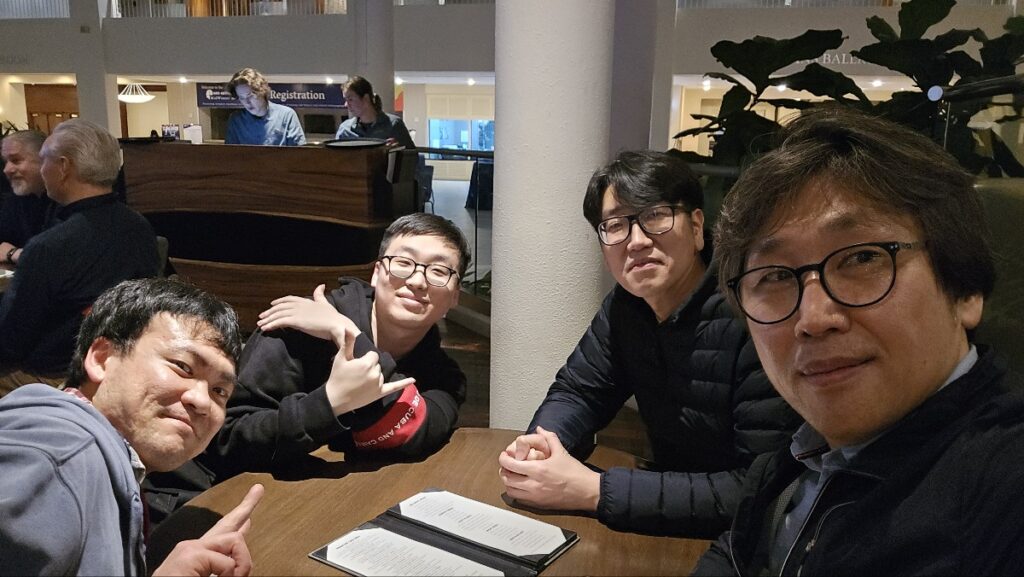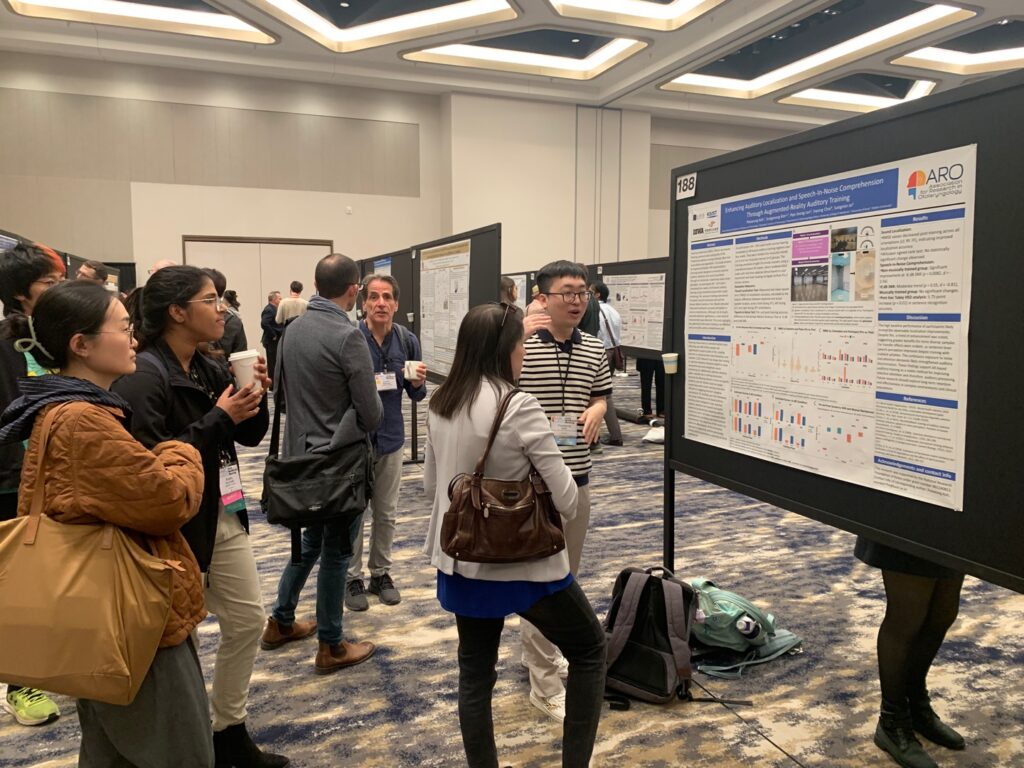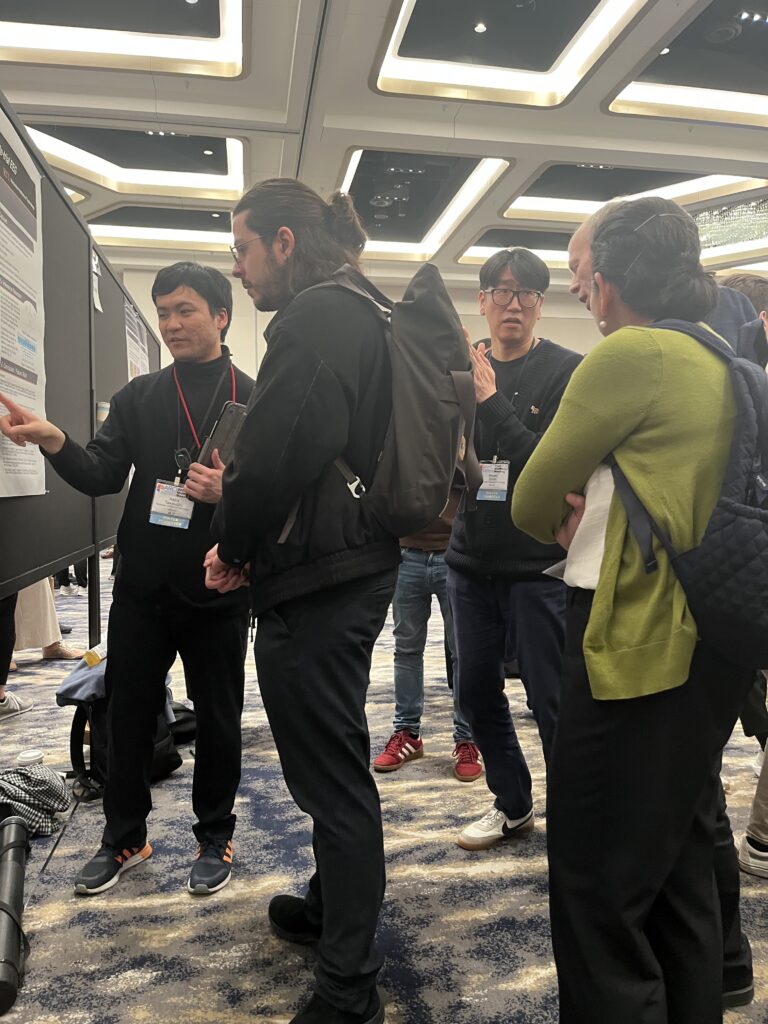Our lab recently had the privilege of presenting our research at the Association for Research in Otolaryngology (ARO) 48th Midwinter Meeting in Orlando, Florida. From February 22-26, 2025, Professor Kim and I went to showcase our work on “Enhancing Auditory Localization and Speech-In-Noise Comprehension Through Augmented-Reality Auditory Training,” a project funded by the lab’s National Research Foundation of Korea grant (Project Number: N01240813).

One of the highlights of the conference was connecting with our collaborators from Rochester Institute of Technology. It had been nearly six months since I last met with Akira Takeuchi and Professor Hwan Shim, making the conference an excellent opportunity to reconnect. Our time together at ARO provided a valuable chance to catch up personally while discussing our ongoing research and potential future collaborations.
Our poster session generated significant interest from the auditory research community. We received thoughtful feedback on our augmented reality auditory training tool, with attendees particularly interested in its potential clinical applications. Many researchers suggested novel analysis techniques that could help us better quantify the training benefits, while others offered valuable insights on implementation strategies to enhance user engagement and training outcomes.

We also presented compelling research on selective attention decoding using EEG and machine learning. This work, led by Akira Takeuchi, focuses on recognizing which sound sources people are attending for future applications in auditory rehabilitation tools. The poster sparked engaging discussions with attendees about methodology and potential applications, further highlighting our lab’s diverse approaches to auditory research challenges.

The conference featured numerous talks that directly aligned with our research interests. Sessions on selective auditory attention and decoding attention were particularly relevant, as they explored the mechanisms underlying sound localization and speech perception in noisy environments—the very topics our AR tool and research are trying to enhance and understand. These presentations provided valuable context for our work and sparked ideas for future research directions.
We look forward to implementing the feedback we received and returning to ARO next year with new findings. The collaborative atmosphere and cutting-edge research presented at the conference continue to make it an invaluable event for our lab.